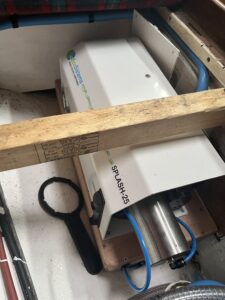
I wasn’t going to have a watermaker.
The whole point of the first trip to the Caribbean had been to work out what I needed – did I need an outboard (no), a sun awning (not so far), a watermaker?
Ah, well, there a subject for discussion. Everyone told me that a 32ft boat with 220 amp hours of battery capacity is just too small for a watermaker (where are you going to put it? How are you going to power it?)
But, on the other hand, I had discovered two things about water in the Caribbean: One is that you have to pay for it (and it’s not cheap). Secondly, when you have bought it – via a manky hose on the dockside or from a putrid tank on a sort of barge with an outboard on the back (which also takes your rubbish and the laundry) the water goes bad in three days. Really; It tastes of bad eggs. You have to boil it.
Thinking about this while sitting in the anchorage at White Bay, Jost Van Dyke, after one too many bushwhackers in the Soggy Dollar Bar, I mused over the way the partying crew on the adjacent chartered catamaran did not appear to notice that suddenly water had started to spurt out of their port hull. The generator had kicked in – triggered either by low battery voltage or, possibly, the level in the water tanks. All those freshwater showers after a swim, the dishwasher, the washing machine…
On a charter catamaran, people don’t expect to economise with water – and why should they? They have four staterooms, three decks, two dining areas, patio doors to go sunbathing spot on the foredeck. They think they’re in a waterfront apartment.
Actually, this doesn’t matter because a modern watermaker can supply 120 litres an hour on demand, automatically…
Of course, I don’t have to feed a dishwasher or a washing machine and I don’t have a diesel generator. But, there are smaller versions and, you must admit, there is something very compelling about the idea of making your own water from nothing more than the power of the sun and the wind. As for the raw material – salt water. Well, there is no shortage of that.
As Iain and Fiona aboard Ruffian of Amble put it: “There is life before a watermaker and life after. If you can find any way of squeezing one in, you’ll never regret it…”
I spent the winter of the Great Refit trying to work out how to do this. I consulted Dave Jones of AdvancedTech Marine.
“Where will you put it?” he said. “They’re not small.” And “Have you done an electrical inventory?”
This is where you write down every electrical device on the boat, how much power it consumes and then multiply that by the number of hours a day it is in use. This gives you an amp/hour figure.
Then you the same with your charging capacity – wind charger, solar panels, engine alternator…
Finally, you accept that with old-fashioned lead/acid batteries, you can only use half their capacity or you will run them flat and ruin them.
I didn’t need to do the arithmetic. Boats with watermakers had five or six hundred amp/hours of battery capacity – sometimes more – sometimes Lithium. They had three or four hundred watts of solar on enormous arrays perched on the stern. They had diesel generators (how else were they going to run their washing machines?)
I had chosen a small boat. I set great store by keeping things small and simple (or so I said). But, all the same, it would have been nice…
Then I started trying to measure up for the new water tanks. I was going to throw away the old leaking flexible jobs and get a pair of proper polyethylene replacements made by Tektanks. It was all arranged. All I had to do was send them the drawing or, if I preferred, I could mock up the new ones in cardboard and send those like flat-packed furniture.
I went to the marina skip and loaded up with an armful of cardboard boxes.
Over two days and half a mile of Sellotape, I discovered I was never going to be able to do this. I stood there with chopped-up cardboard up to my knees and surveyed the two huge voids under the bunks where the tanks were to go.
“Do you know what?” I said to myself. “There’s room in one of those for a watermaker.”
After all, if I had a watermaker, what did I need with two tanks?
I messaged Iain and Fiona again, now in the San Blas Islands. They recommended a Splash 25 – 25litres an hour at 13amps. Utterly reliable. In seven years, it had produced thousands of litres with never a moment’s trouble. Talk to Jim Cudd at Sailfish Marine, they said.
So I did – and I talked to Terry Richardson at Richardson Yacht Services on the Isle of Wight who could fit it and, come to that, measure for the new tank (so that if the measurements were all wrong, it would be his fault).
Jim sent me an invoice. I paid it. The kit would be sent directly to Terry. This was in May.
The fitting was scheduled for July (after all, I wouldn’t need it until I got to the Canaries – that’s where you have to start paying for water… although, that’s not entirely true. If you stop at the Scillies on the way, you have to pay for it there…)
Then there was the first delay. Terry was still very busy in July. Would August be OK?
August would be fine. I arrived in August.
“Where’s the watermaker?” said Terry.
“I thought you had it.”
“I thought you had it.”
I called Jim: “Where’s the watermaker?” I asked his voicemail.
I remember the eventual conversation very clearly. I was walking back from Newport’s public conveniences to the Isle of Wight central library. The library doesn’t have a loo but there is a very nice little park to walk through. Jim explained that he had ordered the watermaker. He had taken delivery. He was getting ready to send it out. But then he had an order from a customer who was in a hurry for one and, since he knew I wasn’t in a hurry, he had let the other customer have my unit.
“So, what you did,” I put it into its most basic form, “is you sold my watermaker – that I had paid for – to somebody else.”
Jim said that he would have to put his hands up to it. He admitted he had done “a bad thing”.
Now I don’t want you taking against Jim just because he did “a bad thing”. Jim is going to turn out to be the hero of the watermaker saga, hold on…
Of course, the obvious course, having sold my watermaker to somebody else would have been to order another one for me (I wasn’t in a hurry). I would never know. But that’s not what happened. Come August, Samsara had been lifted out at Richardson’s yard on the Medina – necessary because the inlet was going to have its own skin fitting as far below the waterline as possible. That was how we discovered that one of the bolts for the cutlass housing had unwound itself, was sticking out by a good 40mm and about to fall out completely. If the cutlass housing falls off the boat sinks, so you can see why it was lucky we decided on the new skin fitting. Meanwhile bigger bolts would fix the cutlass housing – and re-aligning the engine to stop the vibration so it wouldn’t happen again … and, while on the subject of running repairs, I’d manage to pull the spinnaker pole fitting off the front of the mast … and the adjustable sheaves for the reefing wouldn’t adjust to the new mainsail… there was plenty to be going on with while a new watermaker was sent from Spain.
And it was sent from Spain. It was sent from Spain to DHL’s warehouse at East Midlands Airport.
And there it stayed.
Over the next week, sitting high and dry in Samsara’s cabin – or on a park bench outside the library so that Josh, the guitar-playing shipwright could tear the cabin apart to instal his skin fitting and get on with the preliminary plumbing, I got to know the very friendly staff on the DHL helpline rather well. They can afford to be friendly – after all they have all the time in the world because it can only be a tiny percentage of outraged DHL “consignees” who have the patience to navigate the Byzantine voicemail maze you have to get through to reach them.
Oh, the jolly conversations I had with the helpline – all about how interesting it was that there’s a Newport in the Isle of Wight as well as one in Glamorgan: “Imagine if we sent it to Wales by mistake!” (they were going to). Then it transpired that DHL didn’t recognise the account the consignment had been billed to – so that’s why it hadn’t been paid – and why my watermaker was now on something called a “Credit Stop”.
Jim called them: “I have my credit card in my hand. I can give you the numbers now…”
But no, that would not do. DHL would need authorisation from the shipper.
We put Samsara back in the water. I was not in a hurry after all. I could go to Falmouth for the OCC West Country Meet, then on to Jersey to see my son Olly and his family. Then I was going to the Boat Show. Surely it must be sorted out by the Boat Show.
Well, yes and no. I got my watermaker – but only because Jim set up his stand at the Show with a hand-written note on one of the displays announcing: “Splash 25 – stuck in customs!”
He had given me his unit (delivered on time by UPS). This thoroughly decent gesture must have cost him further sales. Also, he didn’t charge for an expensive carbon block filter because of all the trouble I’d been put to – and paid my mooring fees at Southampton Town Quay and didn’t charge me for a whole box of spares…
On top of all this, he couldn’t concentrate of manning his Boat Show stand because of all the time he spent on the phone, his back to the public, haranguing the helpful people on the DHL helpline trying to get hold of my watermaker to put on his display.
“You’re right,” he said. “They’re very helpful – only nothing changes.”
I believe the wretched thing arrived just as the show was about to close.
So, all’s well that ends well, yes?
Actually, not so much. The thing with watermakers is that you must give them clean sea water – certainly not the contents of Island Harbour Marina, where Richardson’s is based and where the water is left to stew for 20 hours a day while the tide goes down and the lock stays closed. So, I didn’t switch it on for the first time until I was out of the Solent and on the way back to Falmouth for the “off”.
It worked brilliantly! Hardly any noise and plenty of lovely fresh water.
Until I came to flush it. This is when you run some of the water you’ve just made through the system to get rid of any bugs that might grow in the damp and the dark. When I did this, there was the most dreadful screeching noise and the tank promptly emptied again. Jim thought there must be air in the system.
In Falmouth, I went right through it, tracing the hoses through bulkheads, working out where A connected to B, following the diagram in the instruction manual.
It was the three-way valve that was the culprit. Josh, the guitar-playing shipwright had installed it so that, although it delivered sea water to the pump OK, instead of the fresh water flush going to the pump, it went straight back into the sea – and so the pump was indeed getting “air in the system”.
I moved the valve, reconnecting the hoses the right way round. That worked for a day or two. Then, when I turned it on, I noticed there wasn’t the familiar clicking of the high pressure pump. Indeed, both the gauges remained steadfastly at zero. I looked at the three-way valve. It was set to “production”. I lifted another floorboard. There was water in there – a lot of water. In fact, it was splashing – and if you looked closely, you could see it pouring out of a hose which had become detached from the pump inlet. To put it in its most basic terms, the boat was sinking again.
I closed the seacock, reattached the hose and tightened up the jubilee clips (which took all the tightening you would expect of clips which had been slipped on but never tightened in the first place.)
Given the very large bill I received from Richardson’s, I am considering writing to them and suggesting a refund to compensate me for the hours (days) I spent trying to work out what was wrong. I will let you know what they say.
Meanwhile, I can tell you that life after a watermaker really is wonderful. I am writing this 17 days into the passage to the Canaries (yes, the weather has been awful). I have washed up in fresh water. I have swabbed the galley in fresh water. I have washed myself (yes, really!) It took a few days to get over the guilt but eventually I was using freshwater as readily as you might turn on a tap in a house.
Then, all I needed to do was press the button once the batteries were up to 12.6V with the wind and sun and wait for the new freshwater to come pouring out of the galley tap showing the tank was full again.
I find it difficult to write the next sentence but here it is: “This normally takes between five and ten minutes.”
I think I might go and wash the salt off the windows…
- Interestingly, no sooner had I ordered my Splash 25 than Iain and Fiona’s packed up for the first time – took them ages to fix, involving a “special tool”. Must make a note to get a “special tool”.
- Stop press: Now it’s making a new and sinister noise. At least, this time, I know what the problem is: Nowhere in the instructions does it say it’s OK for the drown the electric pump – the post entitled “knockdown”.
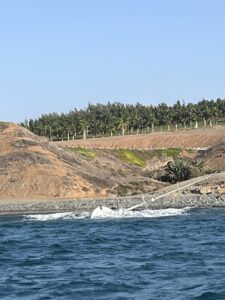
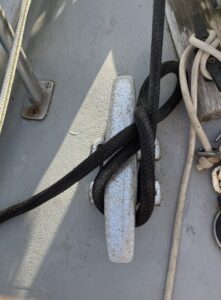


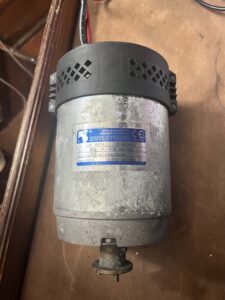

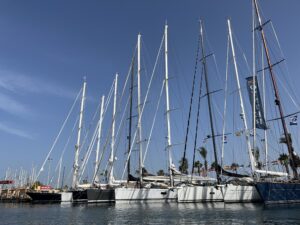
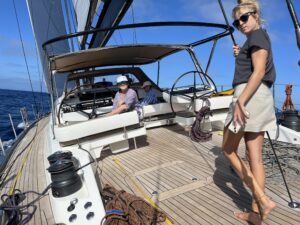
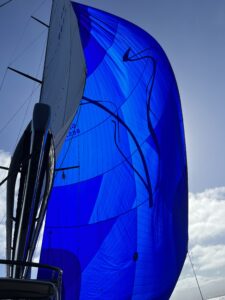
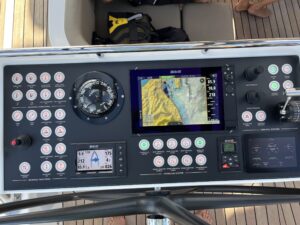
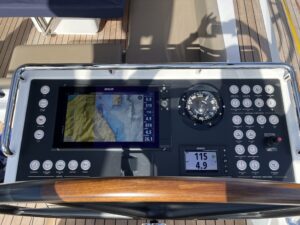
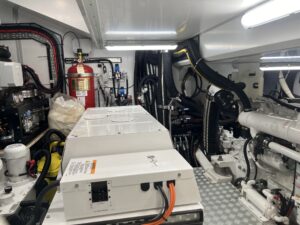
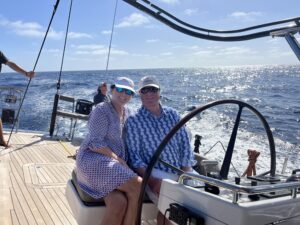
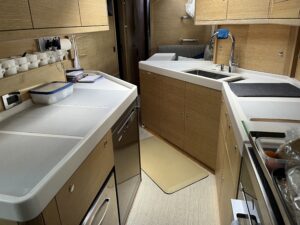

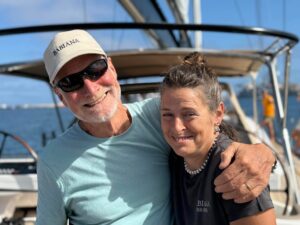

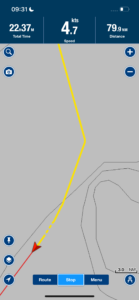
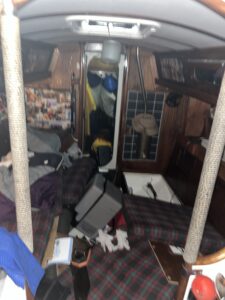
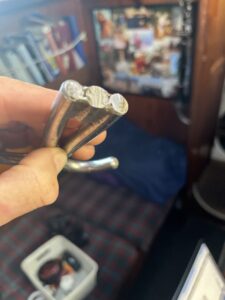
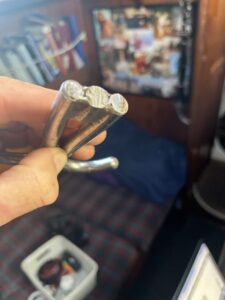
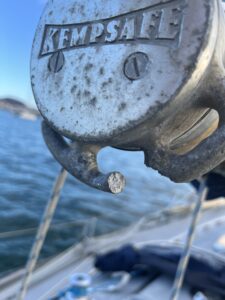
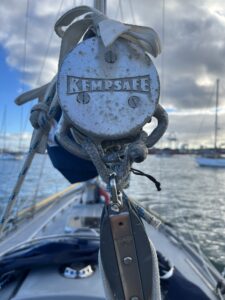
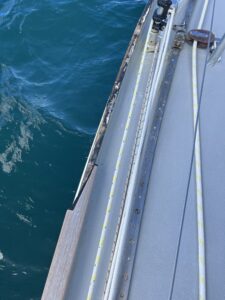
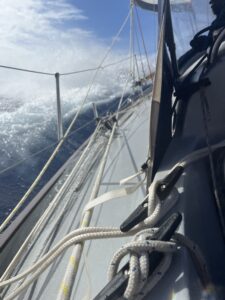
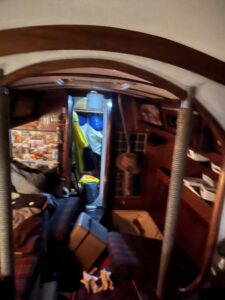

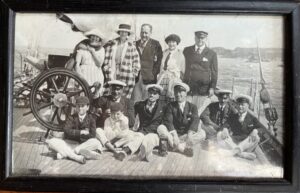
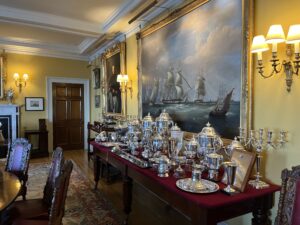
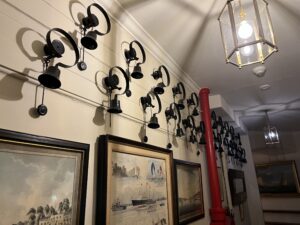
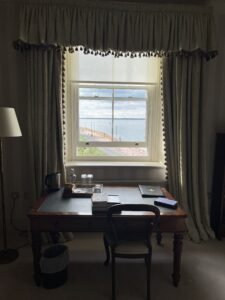
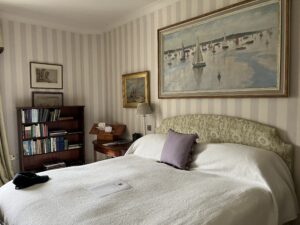
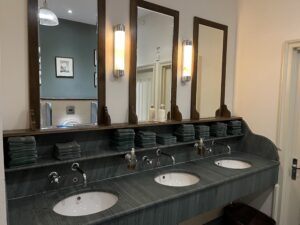

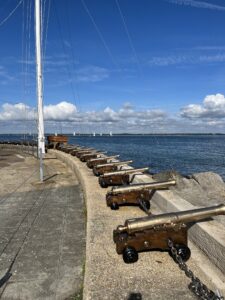
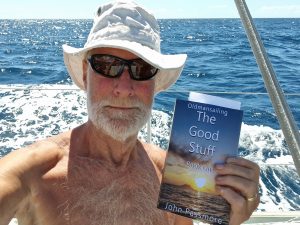
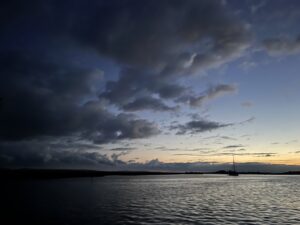
I certainly agree with you. I twice persuaded a former employer to sell a ship on the grounds that she was unlucky. I owned two boats, for a total of forty years, which I considered lucky on the grounds that they had both sunk before I bought them and having tried it they would not do it again.